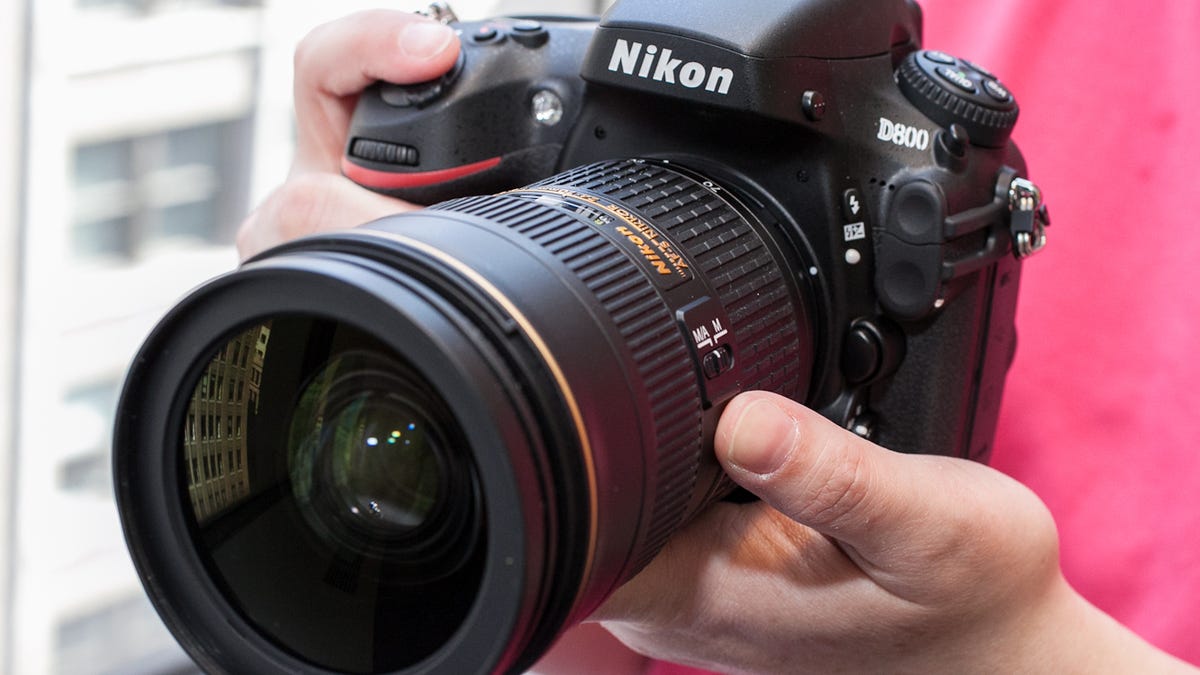Nikon's D800 outclasses camera rivals in sensor test
The new high-end SLR sets a top overall score in DxO Labs' image sensor tests, beating even medium-format cameras. But how will the Canon 5D Mark III compare?

The Nikon D800 is the new king of the heap -- at least when it comes to DxO Labs' test of camera image sensors.
The new 36-megapixel high-end SLR got an all-time high score of 95 on the DxOMark test, which measures a variety of sensor attributes when shooting raw images. DxO Labs said it uses a sensor "with no weak points."
The score is a composite that reflects three attributes: dynamic range, which is the breadth of the span between an image's full black and complete white; color depth, which gauges the vividness and accurate color; and low-light performance, which is the ability of the sensor to capture images in dim light without too many of the photo-degrading speckles called image noise.
For a look at the D800's impressive real-world photo performance, check CNET's D800 review and D800 sample image gallery. For the camera itself, be patient: Nikon says the D800 is in short supply, and one customer I know who was told he'd get his this week just learned that it's now due in April.
The DxOMark score is based on how good an image looks when converted to an 8-megapixel size. A camera with more megapixels can use that resolution to overpower noise if a photo is viewed at a given size.
When zoomed in all the way (which is not how most people view a photo, to be clear, unless it's cropped heavily), the story is different. Pixel-peepers who want to see the performance pixel by pixel can dig into the DxOMark scores by looking at "screen" option in the measurements section; the "print" option shows the results for the 8-megapixel conversion.
The D800 scored the best ever for dynamic range, spanning 14.4 EV, or exposure values. Each step up in EV doubles the amount of light.
The D800 also won the top score for color depth among full-frame SLRs -- those with sensors the size of a full frame of 35mm film from days of yore. The only models to beat it were two larger medium-format image sensors from Phase One, which cost many times the D800's price. And even then they didn't beat it by much.
For low-light shooting, it scored third place, notable given that its high megapixel count means that individual pixels are small. The best low-light performance, such as that of Nikon's new top-end D4 SLR, use fewer, larger pixels.
The sensor is at the heart of the camera's performance, but it's only one factor to consider alongside price, ruggedness, autofocus, video support, burst speed, and more.
So far, the D800 is head and shoulders above its predecessor, the D700, and a good contrast with the D4, which is geared more for photojournalists than the D800 with low-light performance and high durability. The biggest unknown right now is how well the D800 will compare to its direct competitor, the new 22-megapixel Canon 5D Mark III, which DxO expects to test soon.

